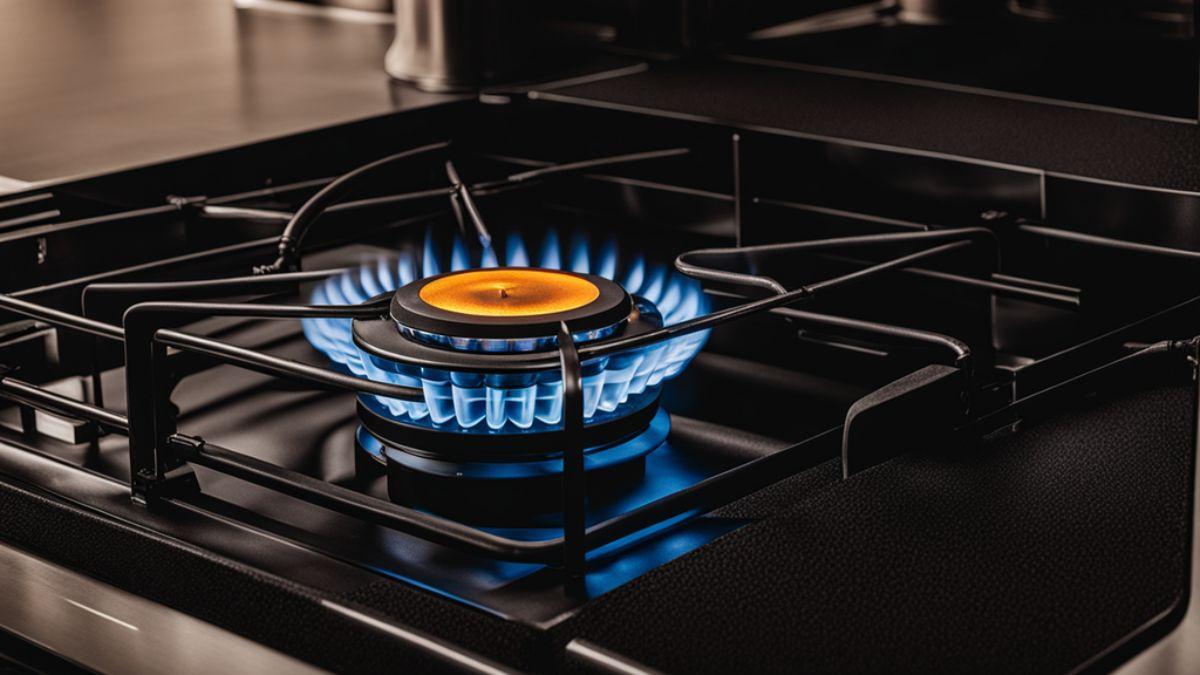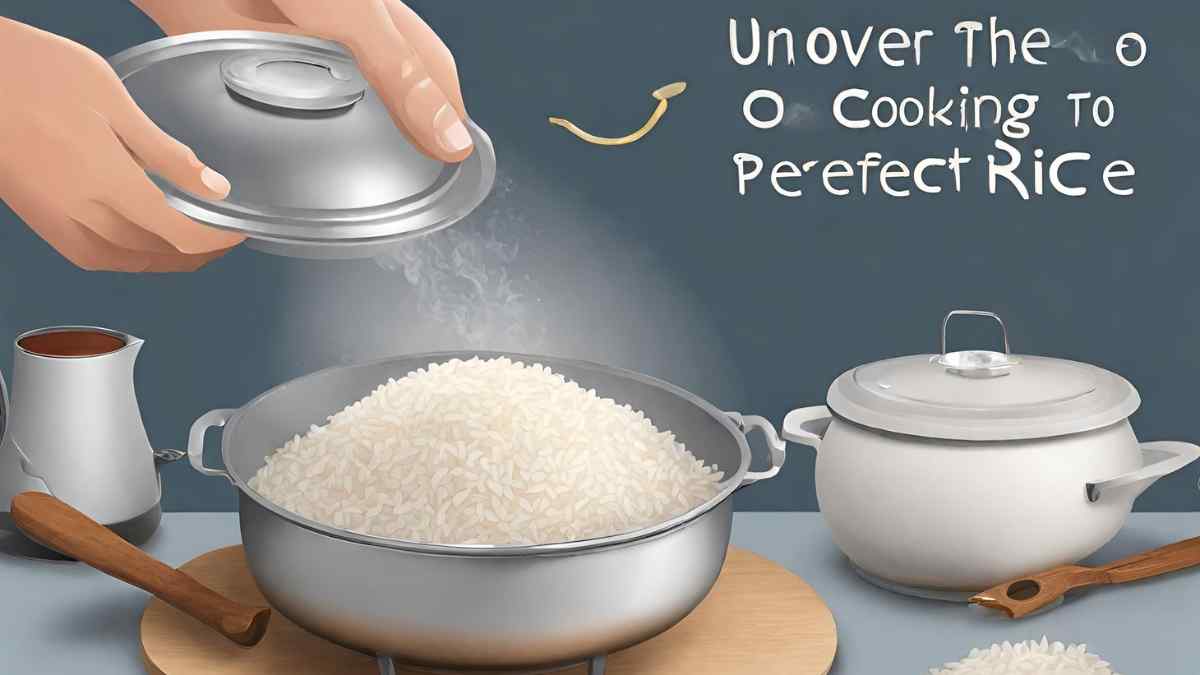
We may earn money or products from the companies mentioned in this post.
Uncover the Best Pot for Rice secrets to cooking perfect rice with our expert guide to selecting the ideal pot. From stovetop to electric, discover the perfect match for your culinary needs.
You love rice. There, you said it. Whether it’s fluffy basmati, nutty wild rice, or sticky sushi rice, you can’t get enough of the stuff. But if you’ve struggled with burnt rice, undercooked grains, or a pot that just won’t quit boiling over, you’re not alone. Finding the perfect pot for cooking rice seems simple enough but can quickly turn into a culinary quest. Do you go nonstick or stainless steel? What about size – how many cups of rice are you really making? And stovetop or electric – does it even matter?
Choosing the Right Pot Material for Cooking Rice
When choosing a pot for cooking rice, the material is key. Each type has its pros and cons, so consider how often you make rice and your cooking preferences.
Stainless steel
Durable stainless steel pots are ideal if you cook rice frequently. They evenly distribute heat and are non-reactive so they won’t affect the flavor. Stainless steel pots also last a lifetime and are dishwasher-safe. However, they can be pricey and may require more water and oil to prevent rice from sticking.
Nonstick coating
Pots with a nonstick coating, like Teflon, make cleanup easy since rice won’t stick to the bottom. They’re affordable and suitable for occasional rice making. However, the coating can start to break down over high heat and with frequent use. For health and safety reasons, nonstick coatings also have a limited lifespan.
Cast iron
Cast iron Dutch ovens are excellent for cooking rice. They retain heat well for an even cooking temperature. Cast iron also imparts a subtle nutty flavor to the rice. However, cast iron requires seasoning and maintenance. It’s heavy, not dishwasher safe, and may react with acidic ingredients. For most home cooks, cast iron is best for occasional rice making.
Ceramic
Glazed ceramic or stoneware pots are attractive and naturally nonstick. They produce light and fluffy rice. However, they are not stovetop-safe and only suitable for oven or rice cooker use. Ceramic pots may also break more easily if mishandled or dropped. Consider a ceramic pot if you have limited stovetop space.
In the end, choose a pot that fits your needs and enhances your enjoyment of cooking and eating rice. With the proper care and technique, you’ll be making perfectly fluffy rice in no time.
Top 6 Best Pot for Rice
| IMAGE | TITLE | Check Price | |
|---|---|---|---|
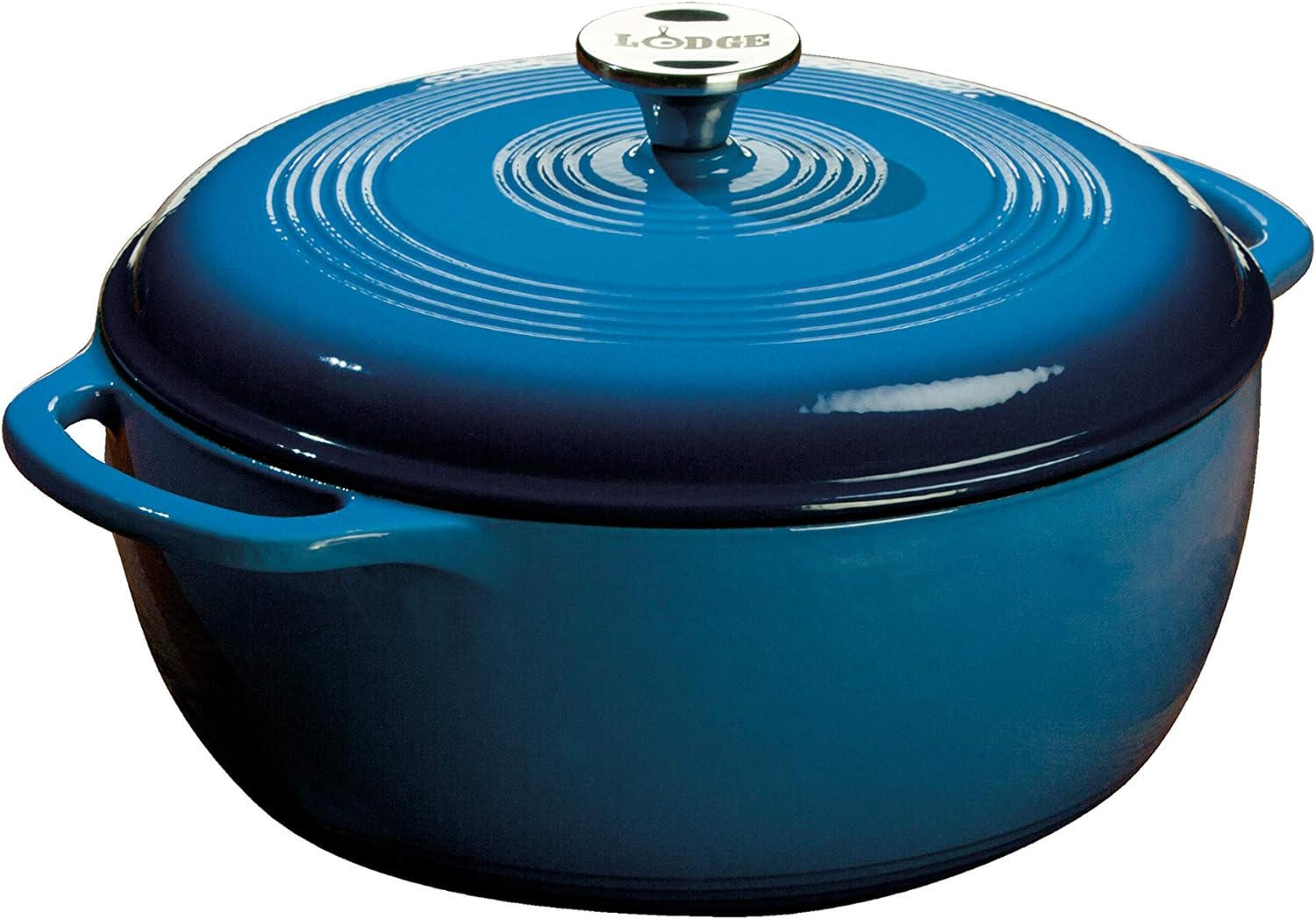 | Lodge Enameled Cast Iron Dutch Oven, 6 Quarts | Amazon | |
 | Le Creuset Enameled Cast Iron Signature Round Dutch Oven, 7.25 qt., Cerise | Amazon | |
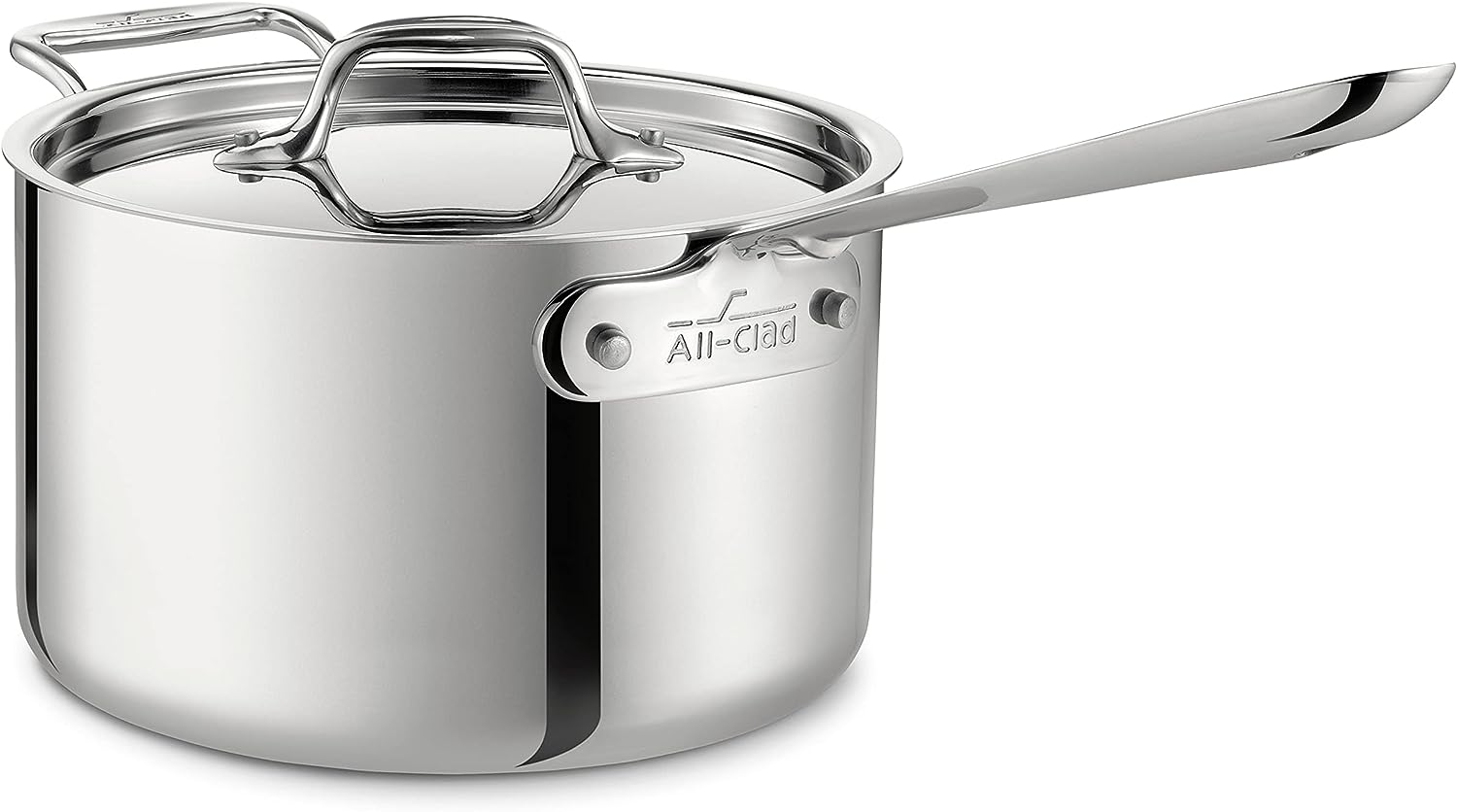 | All-Clad D3 3-Ply Stainless Steel Sauce Pan 4 Quart | Amazon | |
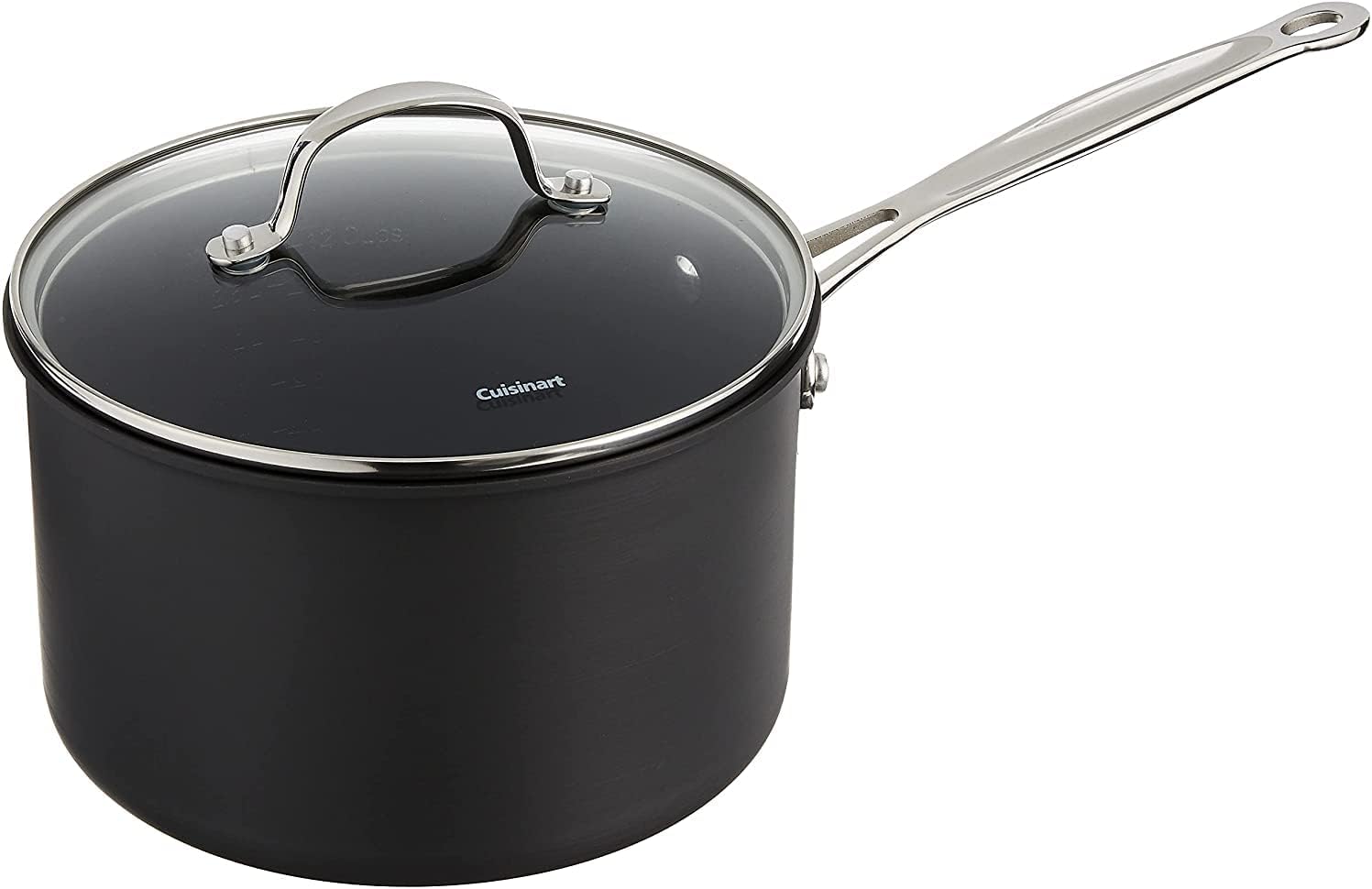 | Cuisinart 6194-20 Chef’s Classic 4-Quart Nonstick-Hard-Anodized | Amazon | |
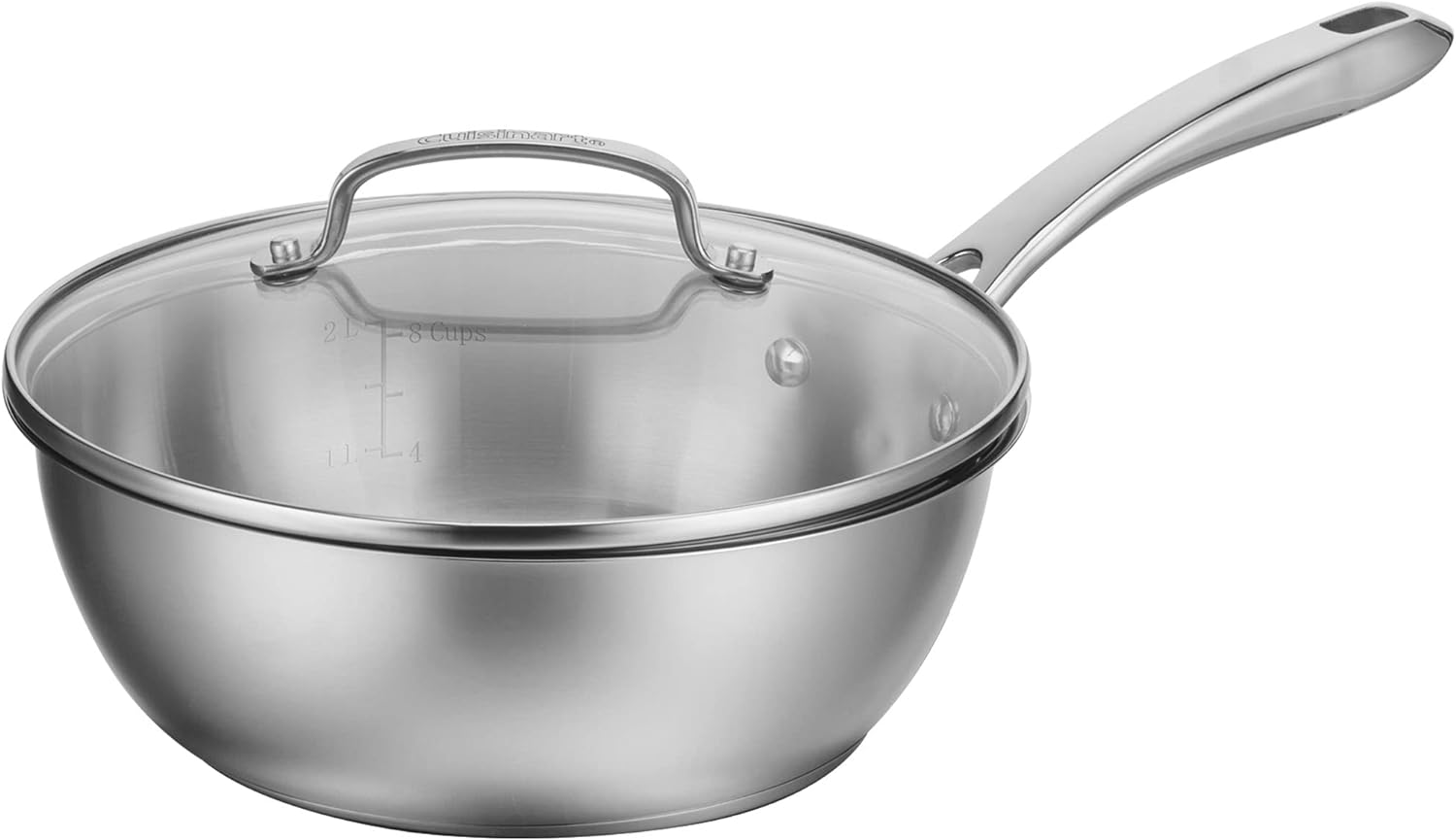 | Cuisinart Sauce Pan with Lid by Cuisinart, 3 Quart Chef’s Pan | Amazon | |
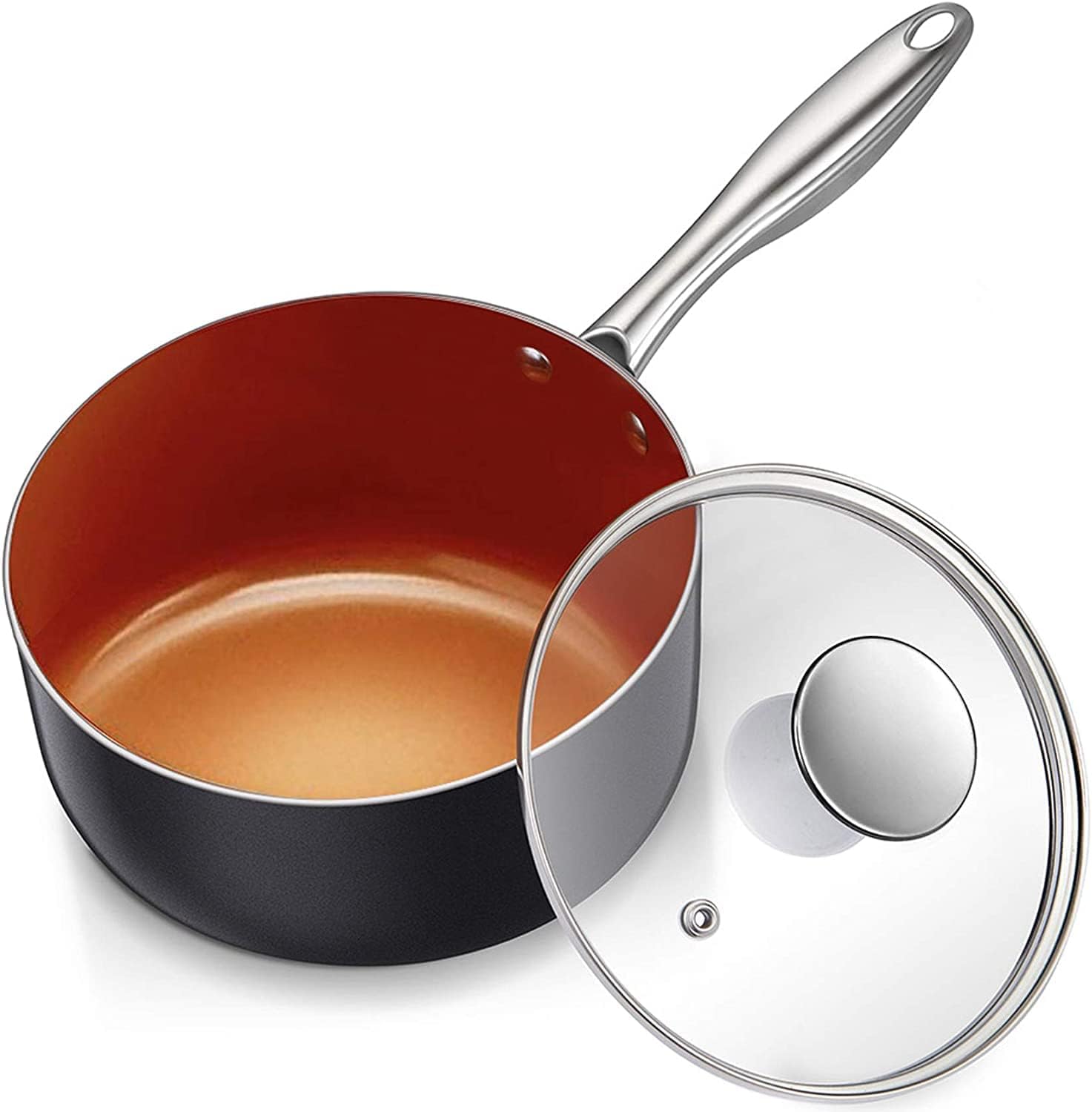 | MICHELANGELO 3 Quart Saucepan with Lid, Ultra Nonstick Coppper Sauce Pan with Lid | Amazon |
Stainless Steel vs Nonstick vs Ceramic
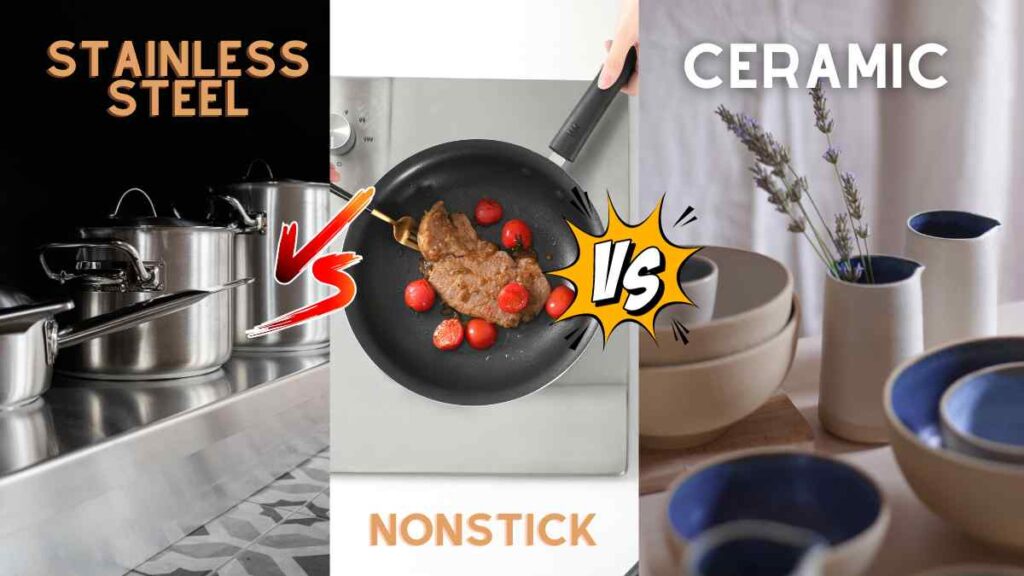
When it comes to cooking rice, the pot you choose can make or break your culinary quest for perfection. Each material has its pros and cons, so consider your needs and priorities to determine the ideal option for you.
Stainless Steel
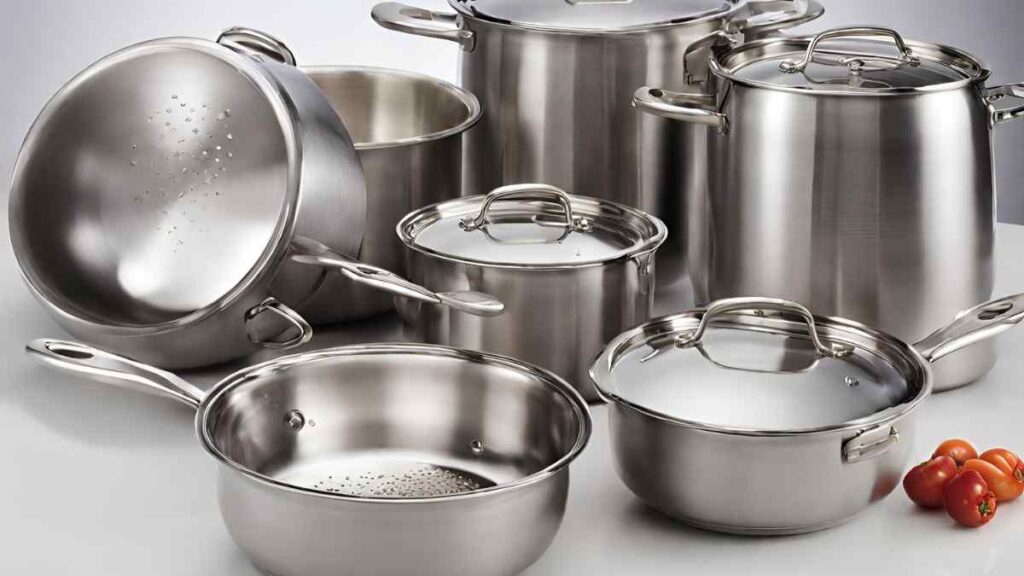
Durable and dishwasher-safe, stainless steel pots heat evenly and are non-reactive so they won’t affect the flavor of your rice. However, they can be pricey and require more oil to prevent sticking. If easy cleanup and professional quality are important, stainless steel is a great choice.
Nonstick Coating
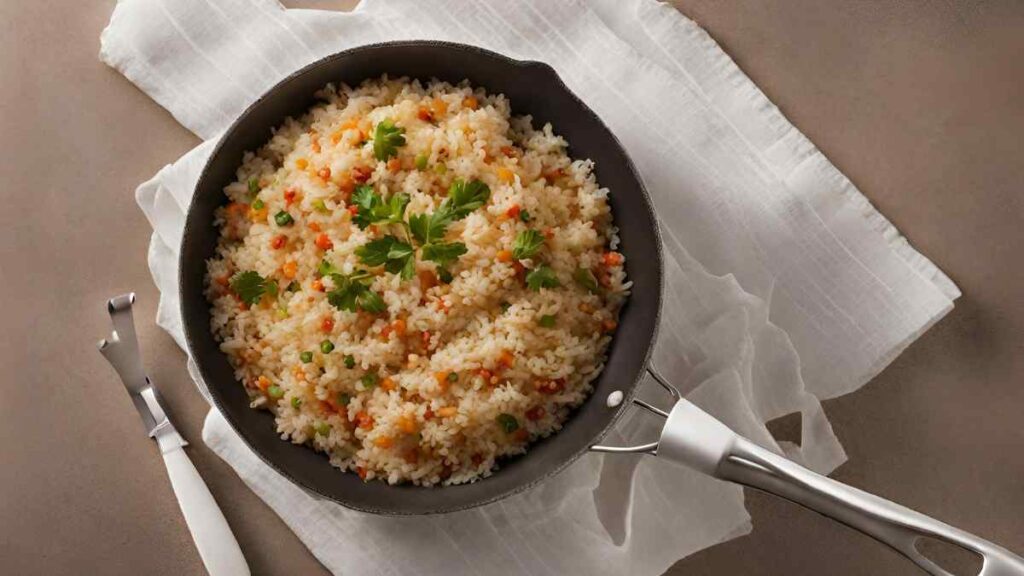
Pots with a nonstick coating like Teflon make it easy to cleanly release your rice after cooking without leaving any stuck to the bottom. They’re also budget-friendly and low-maintenance. The downside is that nonstick coatings can scratch and chip over time, and there are some health concerns about overheating empty nonstick pots. For convenience and affordability, nonstick pots work well but may need replacing more often.
Ceramic Coating
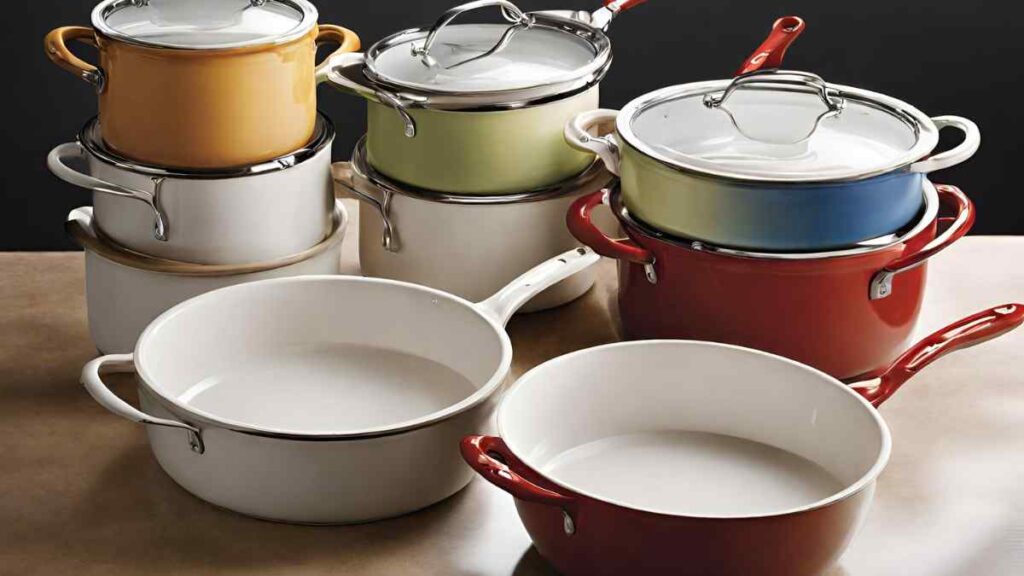
Ceramic-coated pots offer the best of both worlds: natural nonstick performance and durability. Ceramic coatings are scratch-resistant and PTFE-free. However, ceramic pots tend to be more expensive, can be damaged by metal utensils, and the coating may lose effectiveness over time with frequent use. If eco-friendly nonstick is important and you don’t mind the higher cost, ceramic-coated pots are an excellent choice for cooking perfect rice.
In the end, consider how often you make rice and your priorities for cost, health, convenience, or performance to choose a pot that will make cooking your rice a delight rather than a chore. With the right tool for the job, rice perfection can be yours.
Stovetop or Electric Rice Cooker: Which Is Better?
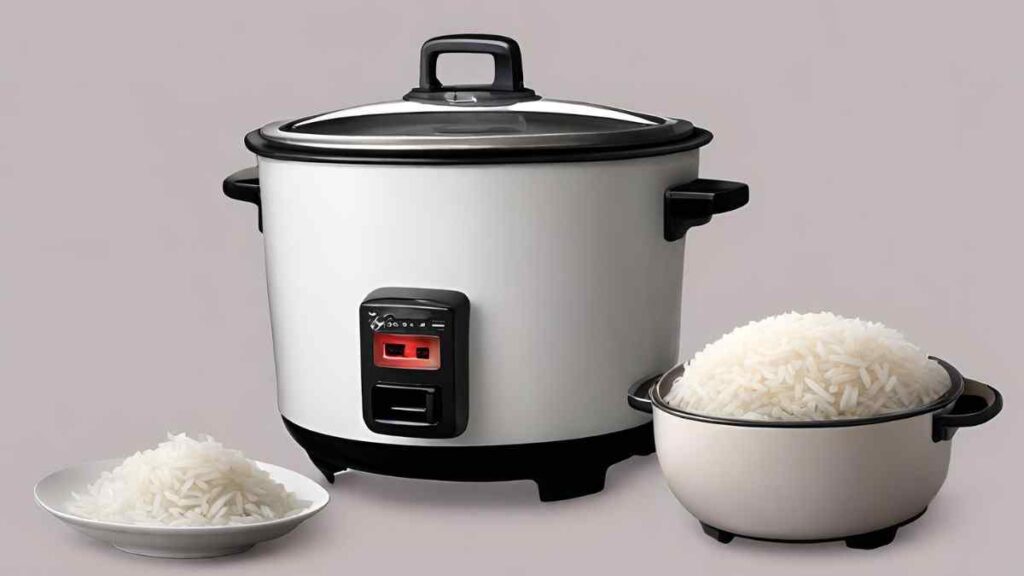
When it comes to cooking rice, the stovetop versus electric rice cooker debate depends on your needs and preferences. Both options can produce light and fluffy rice, but each has its pros and cons.
Stovetop
If you only cook rice occasionally or want maximum control over the cooking process, a stovetop pot is a great choice. You’ll have more direct control over temperature and cooking time. Many home cooks find stovetop rice turns out fluffier, with separate grains. However, there is a learning curve to mastering stovetop rice and it requires close monitoring as the rice can easily become mushy or burnt if overcooked.
Electric Rice Cooker
For hands-free convenience and consistent results, an electric rice cooker is hard to beat. Rice cookers automatically heat and then switch to keep warm mode. This takes the guesswork out of cooking rice and ensures even results every time. Many rice cookers can also steam vegetables and cook other grains like quinoa or farro. The downside is rice cookers are more limited in capacity, typically 3 to 10 cups of cooked rice. They are also more expensive and single-purpose.
In the end, how often you make rice and how much control you want over the cooking process should guide your choice. If you make rice frequently, value convenience, and cook for a family, an electric rice cooker is probably your best bet. If you only cook rice occasionally, want more control over texture, or are cooking for one or two people, a stovetop pot will likely suit your needs perfectly.
Whichever method you choose, the keys to cooking perfect rice are:
- Use a heavy-bottomed pot or rice cooker insert
- Rinse rice before cooking
- Use the proper ratio of rice to water (usually 1:1.5)
- Bring to a boil, then reduce heat and simmer covered until rice is tender and has absorbed all liquid
- Fluff rice with a fork after cooking and let stand covered for 5 minutes
- Add a pinch of salt or other flavorings (optional)
Following these tips will ensure you achieve a culinary quest for the best pot of rice, no matter which cooking method you prefer!
Key Features to Look for in a Rice Cooker Pot
A rice cooker pot is one of the most important parts of the appliance. The material, coating, and size of the inner pot will affect how your rice turns out, so choose wisely. Here are some key features to consider:
Material
The two most common materials for rice cooker pots are aluminum and stainless steel. Aluminum pots typically heat up faster and distribute heat more evenly, resulting in fluffier rice. However, aluminum can react with acidic ingredients like lemon or tomato. Stainless steel pots are durable and non-reactive, though they may produce rice that sticks together more. For the best of both worlds, look for an aluminum pot with a stainless steel coating.
Nonstick Coating
A nonstick coating like Teflon prevents rice and starchy residues from sticking to the pot, making cleanup a breeze. Nonstick pots typically produce lighter, fluffier rice as well. However, the coating can scratch or peel over time with use and cleaning. Pots without a nonstick coating may require a bit more oil or butter and scrubbing after cooking, but they tend to last longer.
Size
Choose a pot size that suits your typical rice-making needs. A 3-cup pot is good for small households or side dishes, while a 10-cup or larger pot is better for big batches, meal prepping, or cooking rice to serve with curries. For most people, a 5- to 8-cup pot is a versatile size that can handle both small and large amounts. Some pots also come with handy measurement lines inside so you can cook the perfect amount of rice every time.
Other Features
Some high-end rice cooker pots also have additional features like:
- An induction heating element for faster, more even cooking.
- A thick, multi-layer base for better heat retention.
- A steaming tray or basket to steam veggies and proteins right over the rice.
- A nonstick or scratch-resistant coating like ceramic for maximum durability.
With so many options to choose from, you’re sure to find an ideal rice cooker pot to match your needs and budget. Choose wisely and your perfect pot of rice will be within reach.
How to Select the Ideal Pot Size for Your Needs
When it comes to cooking rice, size matters. The pot you choose will directly impact how your rice turns out, so take the time to consider your needs. For most home cooks, a medium or large pot is ideal.
Medium (3 to 4 quarts)
A medium pot is perfect for a family meal or when you want leftovers. It will yield 4 to 6 cups of cooked rice, enough for 4 to 6 servings. This size also works well if you like to meal prep and make a big batch of rice to use in multiple dishes throughout the week.
Large (5 quarts or more)
For larger families or if you’re cooking rice for a party or potluck, go big with a 5-quart or larger pot. You’ll end up with 8 cups or more of light and fluffy rice, enough to serve 8 people or more. A larger pot also gives the rice more room to expand as it cooks, which can help it turn out even fluffier.
Of course, for a single serving or a small side dish for two, a smaller 1- to 2-quart pot will do the trick. The key is to choose a pot with a tight-fitting lid and a heavy, evenly conducting bottom, like stainless steel or enamel-coated cast iron. Avoid thinner aluminum or nonstick pots which don’t retain or distribute heat as well.
For the perfect pot of rice, here are some pro tips:
- Use a pot with a lid. A tight-fitting lid traps steam which helps the rice cook evenly and become light and fluffy.
- Choose a heavy-bottomed pot. Thicker pots like stainless steel or enamel-coated cast iron retain and distribute heat better for consistent cooking.
- Add a touch of oil or butter. A little fat helps prevent the rice from sticking as it cooks and adds richness.
- Bring liquid to a boil, then reduce heat. Boil the water or broth before adding rice, cover, and reduce heat to the lowest setting. Simmer until rice is tender and has absorbed all the liquid.
- Fluff with a fork. Gently fluff the rice with a fork after cooking to allow steam to escape and separate the grains.
- For extra flavor, use broth or coconut milk instead of water. The liquid you cook the rice in will add flavor to the final dish.
By choosing the right pot size for your needs and following some essential tips, you’ll be enjoying a perfect pot of rice in no time. Your culinary quest for the ideal rice begins with a simple but important first step.
Specialty Rice Pot Styles: Rice Cookers, Paella Pans, Etc.
Rice Cookers
For the perfect pot of rice with the push of a button, a rice cooker is hard to beat. Rice cookers come in a range of sizes, from 3 to 10 cups of uncooked rice, so you can find one suited to your needs. The key is to use the measuring cup provided with the rice cooker to add the proper rice-to-water ratio, usually 1:1 to 1:1.5.
Once you’ve added the rice and water, secure the lid and press the “cook” button. The rice cooker will automatically heat up, then switch to the “keep warm” setting when the rice is done. No watching the pot or worrying about burning the rice. Many rice cookers also come with additional settings for brown rice, porridge, and steaming.
If you make rice frequently, a rice cooker is an incredibly useful gadget to have. The rice will stay warm for hours without drying out or burning. Some higher-end models even have delay start timers so you can load the rice in the morning and have it ready at dinnertime.
Paella Pans
For an authentic Spanish paella, you’ll need a paella pan. Paella pans are large, round pans, usually made of steel or cast iron, with two handles. Gas burners or paella burners specifically designed for paella pans help ensure even cooking over an open flame. Paella pans typically range from 10 inches up to an enormous 40 inches, so you can make paella for a crowd.
The key to a perfect paella is using a flavorful stock or broth, saffron, and a variety of meats and vegetables. Once the broth has been absorbed, the rice on the bottom of the pan gets delightfully crusty and flavorful. The wide, shallow shape of paella pans allows for maximum surface area so more of the rice gets that desirable crusty layer. Paella is always a social, shareable meal, so a paella pan is ideal for feeding family and friends.
For the adventurous home cook, a paella pan opens up a world of possibilities for one-pot rice dishes from around the globe. You can make jambalaya, jollof rice, biryani, or fried rice. The only limit is your imagination! With the right recipes, your paella pan may become your new favorite way to make rice.
Tips for Caring for Your Rice Pot and Making It Last
To keep your rice pot in tip-top shape and make perfectly fluffy rice for years to come, follow these care tips:
Seasoning
For the first few uses, be sure to season your rice pot. Simply rinse the pot with water, then coat the inside with vegetable oil or rice bran oil. Fill with water and rice, bring to a boil, then drain. This will prevent sticking and impart a subtle flavor. Re-season occasionally or if you notice rice sticking.
Rinsing
Rinse your rice pot after every use. Fill with hot, soapy water and let soak if needed. Scrub off any stuck-on bits with a sponge or nylon scrubber. Rinse well with water to remove all soap, then dry completely to prevent water spots. For stuck-on messes, make a paste from baking soda and water and scrub with the paste using a sponge or scrubber. Rinse and dry when done.
Drying
After rinsing, dry your rice pot thoroughly. Water left sitting in the pot can lead to mineral buildup and spots. Air drying upside down is best. You can also dry with a towel, then place over low heat for a few minutes to ensure all moisture is evaporated.
Storage
When not in use, store your rice pot in a dry place away from extreme heat or cold. This will prevent warping or damage. If stacking with other pots and pans, place a towel between to prevent scratches.
Non-reactive
For the best results, use a rice pot made of non-reactive materials like stainless steel, ceramic or enamel coated. These won’t interact with the rice and impart a metallic flavor. Non-reactive also makes for easier cleaning without stains.
By properly caring for your rice pot, you’ll be making fluffy, delicious rice for meals to come. A little TLC will keep your pot in shape and prevent the need for replacement, saving you money in the long run. Follow these tips and your rice pot can become a trusted tool for homemade meals.
Putting Your Rice Pot to the Test: Cook Times and Results
Now it’s time to put your new rice pot to work! Follow these tips to make perfectly fluffy rice.
Measure Carefully
The key to great rice is using the proper ratio of rice to water. For most types of rice, use a 1:1.5 ratio of rice to water. So for every one cup of rice, use 1.5 cups of water. Measure the rice and water accurately for the best results. Too much or too little water will yield mushy or crunchy rice.
Rinse the Rice
Place the rice in a fine-mesh strainer and rinse under cool running water until the water runs clear. This removes excess starch and any dirt or debris. Drain the rice thoroughly after rinsing. For extra starchy rice like sushi rice, rinse for at least 30 seconds to remove starch.
Add Oil or Butter (Optional)
Adding a bit of oil, butter, or rice bran oil is optional but can help keep the rice from sticking and add flavor. Use about 1 teaspoon per cup of rice.
Bring to a Boil, Then Reduce the Heat
Add the rinsed rice and water to your rice pot and bring to a boil. Once boiling, cover immediately, reduce the heat to the lowest setting, and simmer until the rice is tender and has absorbed all the liquid, about 15 to 20 minutes.
Fluff and Serve
Remove from heat and let the rice stand covered for 5 minutes. Fluff the rice with a fork and serve immediately. Fluffing the rice allows steam to escape and separates the grains. Your rice is ready to serve and enjoy!
The key factors for perfect rice are using the proper ratio of ingredients, rinsing the rice, bringing it to a boil then reducing heat, and allowing it to stand covered before fluffing and serving. Follow these essential tips and you’ll be making fluffy, delicious rice in your new rice pot in no time!
Frequently Asked Questions on Rice Pot Selection
Have some questions about choosing the perfect pot for cooking your rice? We’ve got you covered.
What type of pot is best for rice?
Should I get a pot specifically for rice?
How much should I spend on a rice pot?
What size pot do I need?
Does it matter what shape the pot is?
Hope this helps clear up any questions you have about selecting the perfect pot for cooking fluffy, delicious rice. Let us know if you have any other questions!
Conclusion
Here you have it: a comprehensive guide to selecting the ideal pot for preparing fluffy rice. You now have all the information you need to make an informed decision, whether it’s glass or ceramic, hob or electric. Rice cooking can become second nature with the appropriate vessel. No more wet messes or scorched buttocks. Every time, the grains are ideal—light and fluffy. Get out there and start shopping; your culinary adventures are waiting for you. A tasty new staple has arrived for you to include in your weekly menu. I look forward to spending many more dinners at the table with you, connecting over a bowl of your beautifully cooked rice.
More Best Cookware Recommendations
- Is Carote Cookware Safe? A Safe and Healthy Option
- Zeuwing Cookware Reviews: Revolutionize Your Cooking with these Power Packed Pots
- Swiss Diamond Cookware Reviews: Everything You Need to Know
- Is Masterclass Cookware Safe? (PFOA-Free, Non-Toxic, and Durable)
- Can You Put Non-stick pans are dishwasher-safe? (The Truth!)
- Reviews Tramontina Cookware: The Best Cookware for Your Needs
- Buy Family Pan Reviews: Find the Perfect Pan for Your Kitchen
- Top-Rated Best Cookware for Gas Stoves: Revieaws and Recommendations
- Top 5 Best Dishwasher Safe Pots and Pans for Any Budget
- GreenPan Padova Review: The Best Non-Stick Cookware for Healthy Cooking






